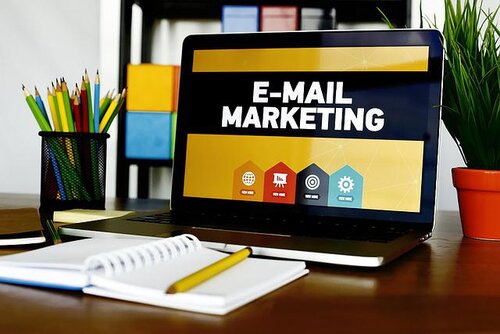by Carolyn Edlund
Plan, create and send email marketing campaigns that get results for your art business.

The purpose of sending email campaigns over time is to gain awareness, build a relationship with members of your audience, and stay in front of them. They should come to feel that they know you, and that your art is memorable. The core message you share should reflect your brand story. Stay consistent and let your story and your portfolio unfold before your audience in steps. Not only will this help develop trust, but you’ll be one of the first people they think of when they are ready to buy art or select a gift.
Each email you send should be focused, straightforward and concise. Addressing too many subjects can be distracting. If you have several announcements, you might want to use separate emails to share them. An email could be as short as 100 or 200 words in length and still be very effective.
Hone your message
When you write your email message, know what you want the reader to do. Share this through making a Call to Action, which is a request to do something. Perhaps you want them to see your newest work of art. Or you may ask the reader to shop for merchandise in your online store. Use a direct link to that store either as a hyperlink in the text of a paragraph or create a button that says Shop Now or Learn More. Buttons can be irresistible invitations that people naturally want to click.
Not all of your email campaigns will be sales pitches, though. Ration this to about every third or fourth contact. Your other emails should be updates, perhaps telling about a new piece you are working on, or celebrating the installation of a recent commission. They should contain language that helps your audience connect emotionally with the art you create.
But when you do intend to sell, make it clear. You might show a work of art or two with title, medium and size and state that they are available. Invite the reader to browse through your other work for sale and include a link.
Even though you won’t be overtly selling in most of your messages, the links you include in each email will passively invite the reader to view your work or stay connected. Include a link to your art website in every email you send. That link may be placed under your signature, for example, if nowhere else. If you’re on Facebook, Twitter, Instagram, Pinterest or other social platform, place icons in your email that are live links, and check to be sure they are working. These invite the reader to click and follow you there.
Test and send
Before you send out email campaigns, do a test run. All email service providers have a function that allows you to send the email to yourself or others ahead of time. Make use of it. Check that everything looks right, links are working and that you are happy with the images in the message.
Then schedule your email to go out on the date and time of your choosing. Some days are better for sending emails than others. Late Friday night, for example, probably would not be a good time, while Tuesday late morning would be better. Your email service provider analytics will show you the opens and clicks you get on each campaign. That will help you determine the best time to send out your message for maximum impact.


Speak Your Mind